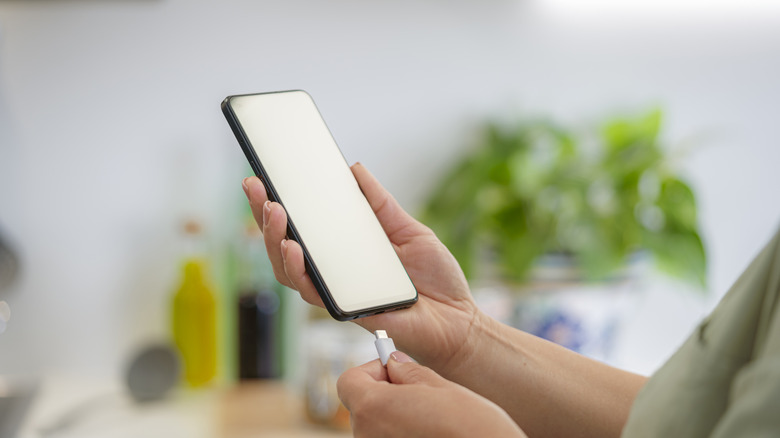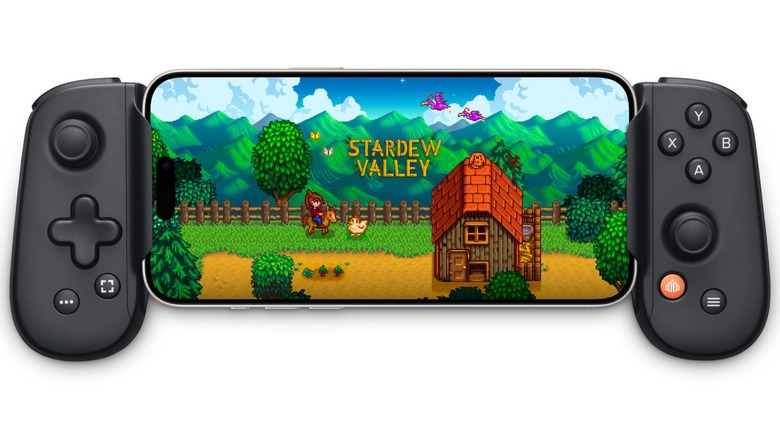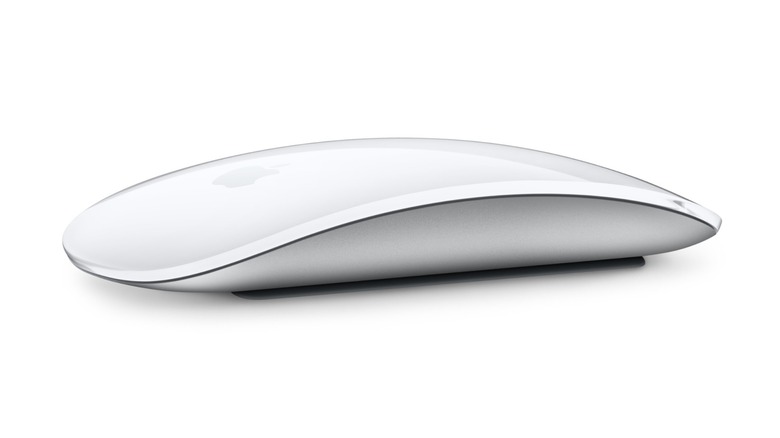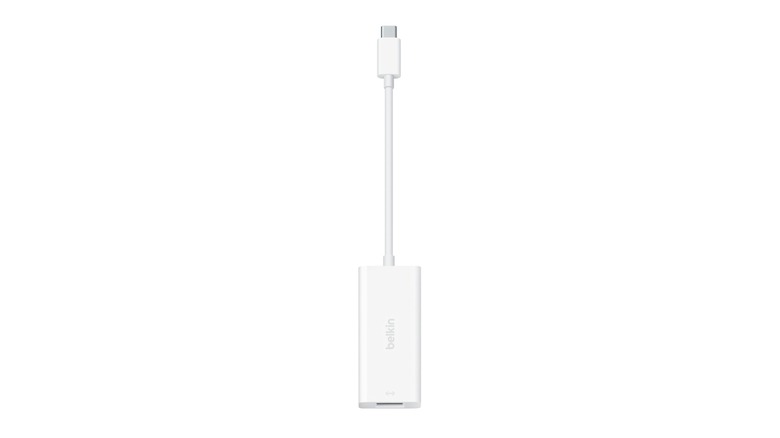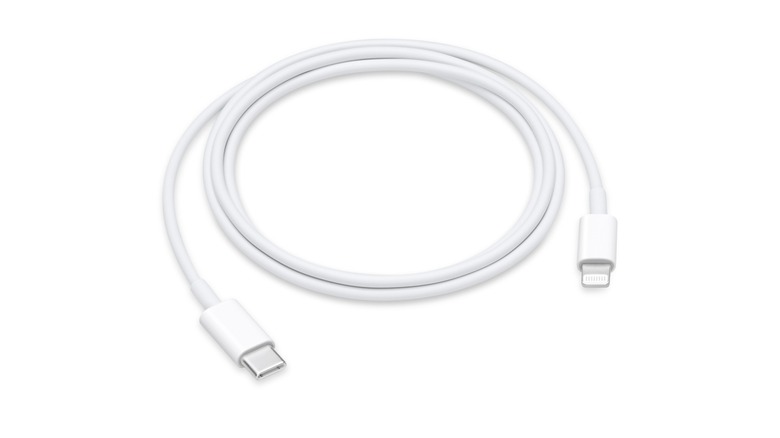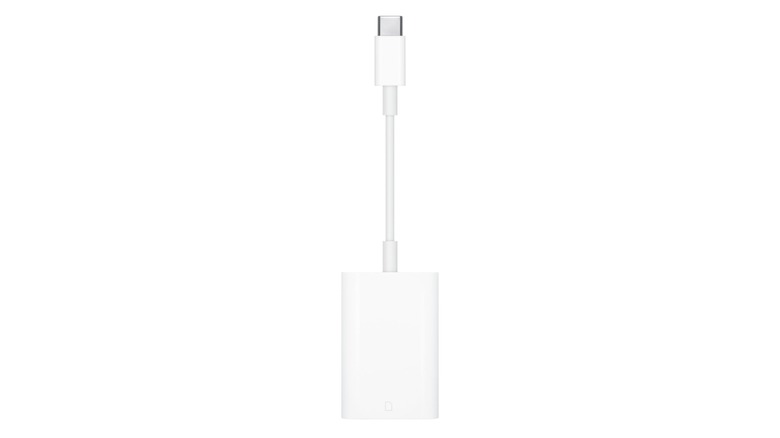5 Uses For Your iPhone's USB-C Port
We may receive a commission on purchases made from links.
Apple devices didn't always have USB-C support, but many recent models have started to mark it as a standard. Without requiring a proprietary connector for charging, iPhones have become more accessible than ever even if you're swapping to one from an Android phone. But for some owners, there isn't an immediate use for the port thanks to features like MagSafe or Qi chargers. USB-C does also allow for an easier connection with your computer, but that's not exactly an obscure feature.
We previously covered 5 uses for your iPad's USB-C port that went beyond simple charging or file transfers. All of these uses can apply to iPhones as well, but there are some additional possibilities you could take advantage of. You might even find some of them uniquely beneficial to iPhones in particular thanks to their form factor. These additional USB-C port uses might not be helpful for every iPhone owner, but they're worth considering if you happen to find yourself wanting a bit more convenience.
Controllers
Thanks to its USB-C connection, the iPhone can easily support controllers like the Backbone ONE. On top of being accessible for a platform that's arguably the best for mobile gaming, it grants you access to console and PC games through remote play apps. The iPhone plugs into the controller directly, letting it be used as its own screen without actually needing to turn on your other displays. It also makes the iPhone much easier to hold while gaming, no longer forcing you to deal with the touch screen just to perform basic actions.
Of course, you can also just use a Bluetooth controller with your iPhone, bypassing the need for USB-C at all. But that doesn't really allow you to keep your phone in your hands while playing unless you clip it directly to the controller. Otherwise, you'll just have to keep the phone separately, which might leave you without a very clear view with how small the screen is.
Keyboards, Mice, & Displays
If they're able to attach with a USB-C cable, any computer peripheral can be used with your iPhone. This includes monitors like the Dell 27 Plus, as well as Apple's own Magic Mouse and Magic Keyboard. This basically allows you to turn your iPhone into a small computer, or — if you're using an aforementioned Bluetooth controller — a miniature gaming console. Keyboards and mice can also be fantastic workarounds in case your iPhone's touch screen is unresponsive.
Getting keyboards and displays to work on the iPhone is as simple as plugging them in. Mice are mostly the same, but if you put in some additional work by accessing settings, you can adjust the pointer's size and speed. You can even reassign buttons or make the pointer controllable through a keyboard, so you don't have to choose between two different peripherals. You could also just use a hub to connect everything at once, which can make your iPhone even more like a mini-PC.
Ethernet
Despite being a portable device, an iPhone can support wired Internet connections. A simple USB-C to ethernet adapter is enough to get the job done with minimal effort, requiring no additional setup beyond plugging everything in. You don't need to have your Wi-Fi or mobile data settings turned on, either, avoiding any accidental data usage in case you're on a limited plan. It's a no-brainer if your wireless connection at home isn't nearly as stable as your wired options.
The latest iPhones can have a storage capacity of up to 2 TB without any external expansion. That frees up a lot of room to download taxing apps and high-quality media, but that also means you'll spend a lot of time doing so without a wired connection. Ethernet is almost always a faster option than Wi-Fi, allowing for whole gigabytes to be downloaded in just a few seconds. This will depend on what speeds your service provider offers, but using an ethernet adapter is never going to hurt.
Lightning Connection
For a long time, Apple has used lightning connectors for all of its major devices, which has led to many accessories losing compatibility with other pieces of tech. While USB-C rectifies this, it also creates a problem for anyone who owns those accessories, seemingly forcing them to buy new ones due to the newer iPhones lacking a lightning port. Fortunately, the solution comes in the form of cheap adapters and cables, practically letting you regress the new USB-C plug back to its lightning-based counterpart.
Thanks to adapters and plugs, you don't have to worry about no longer needing your old Apple lightning cables. Pretty much everything with this connector will work on your new iPhone as long as you have an adapter. Even a USB-C to lightning cable can be helpful if you want to transfer data from older iPhone models starting with the iPhone 14. It matters a lot if your old, busted smartphone is having trouble with wireless connections, leaving you without any other way to smoothly transfer everything over.
External Storage
Just like with iPads, iPhones can accept external storage options with their USB-C port. While your first thought might be to use a solid-state drive, flash drives are also compatible without the need for an adapter as long as their plug is correct. With an adapter, you can also take advantage of SD cards, which is especially helpful for photographers looking to import their pictures. The latest iPhones are held in high regard for their cameras, after all, so using an adapter for SD cards can be great if you want to make your phone into your primary capture device.
Apple's iPhones don't offer a built-in slot for external storage on their own. In fact, more smartphone manufacturers have been ditching their own storage expansion opportunities, with recent Samsung phones lacking any sort of microSD slot present in older models. As a result, flash drives and SD card adapters can be useful for more USB-C devices than just iPhones. It's almost ironic when you consider how Samsung didn't take nearly as long to adopt USB-C in its own lineup, only to lose out on connectivity that Apple owners lacked up until the past few years.
